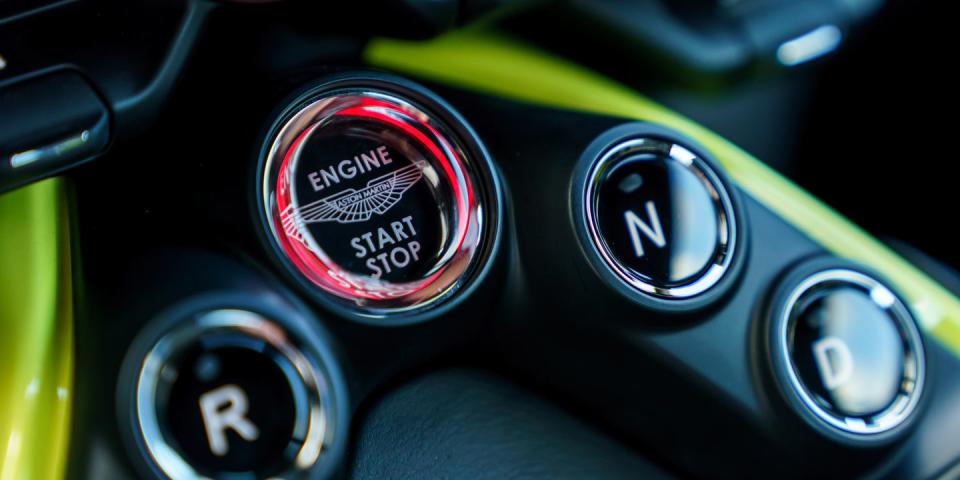Aston Martin CEO Predicts the Demise of Dual-Clutch Transmissions

A decade ago, the dual-clutch transmission was being feted as the gearbox of the future, but now the view over the gear-swapping landscape looks very different as manufacturers increasingly return to conventional automatics. For instance, the new Audi RS5 and BMW M5 have both switched to eight-speed torque-converter gearboxes (each supplied by transmission giant ZF), whereas their predecessors packed dual-clutch transmissions. The recent Beijing auto show gave C/D a chance to talk to a man who is almost uniquely qualified on the subject: Aston Martin CEO Andy Palmer.
That’s because the 54-year-old British engineer began his career with now defunct clutch and brake supplier Automotive Products in the U.K., where he worked on one of the very first working dual-clutch transmissions before starting the rise that would take him to become Nissan’s head of product development and eventually head of Aston Martin. An inquiry into why the ZF automatic was chosen for the new Vantage-replacing its predecessor’s lurching automated manual transmission-produced a prediction that all electronically controlled clutched gearboxes are living on borrowed time, be they single-clutch automated manuals or dual-clutch automatics.
“I’ve never been a great fan,” Palmer said. “I worked on some of the very first dual wet-clutch gearboxes back in the early 1980s, and I saw how they evolved. The original idea was, ‘Americans like automatics and Europeans like manuals and the Japanese basically like CVTs, so how do we cut down on the complexity?’ So there was the question of how to create a gearbox that would work everywhere.”
The result was, by necessity, a compromise. And not a very good one, according to Palmer. “It’s an imperfect beast, and somehow or other we’ve managed to surround it with this idea that it’s super quick and that shift shock is good, and it’s mythical,” he said. “A good conventional automatic gearbox like the ZF is cheaper, which is absurd when you think that the manual gearbox has survived because it is meant to be the less expensive option, but there’s so much technology loaded onto a [dual-clutch, computer-controlled gearbox] to make it work. It’s heavier as well, which is another disadvantage, but the real issue is the gearchange itself. It’s actually now faster in a [planetary] automatic, because you can control the torque. That means ultimately your zero-to-60-mph times are quicker with an auto, which takes away all of the marketing puff for the dual-clutch.”
Palmer says that Aston’s policy will remain that of using either a conventional automatic tuned for speed or, for the decreasing number of buyers who want one, a conventional manual gearbox in some models. “Would we ever use a dual-clutch? I think that’s very unlikely, and I think that lots of other people are coming to that conclusion as well.”
The dual-clutch still has some parts of the market to itself. McLaren and Ferrari exclusively use such transmissions, while Lamborghini uses one in the Huracán (and an automated manual in its Aventador flagship). Further down the market, Volkswagen Group remains the biggest fan of dual-clutch transmissions, using them extensively in VW products; Porsche also helped to popularize what it calls the PDK-Porsche doppelkupplungsgetriebe, which means “Porsche dual-clutch gearbox”-by using them in its race cars starting in the early 1980s. (The Cayenne SUV is the only Porsche to use a planetary automatic with a torque converter.) Volvo’s innovative new three-cylinder hybrid powertrain is also based around the use of a dual-clutch gearbox to blend the gasoline and electric sides of its powertrain.
Clutch Player: This Tech Just May Be the Future of Automotive Transmissions
Porsche Committed to Manual Transmissions “For as Long as Possible”
While stressing he can only speak for Aston, Palmer believes the clutched gearbox is going to progressively lose ground to the torque-converter-equipped automatic it was supposed to replace. “Ten years ago, it still looked like the transmission of the future. Now it is starting to look like the transmission of the past.”
You Might Also Like

 Yahoo Autos
Yahoo Autos 